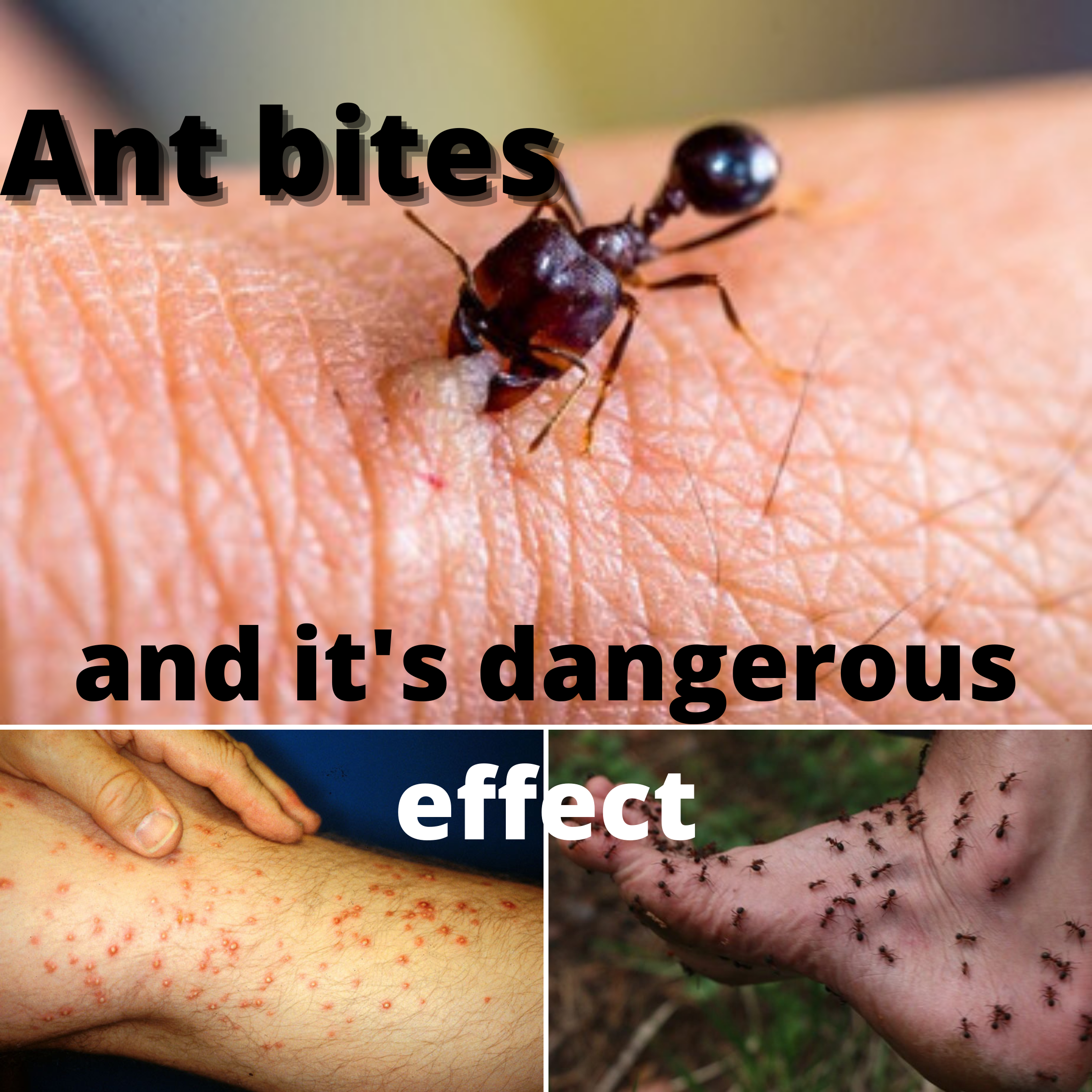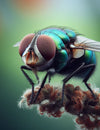
Understanding Fire Ant Bites
Fire ant bites are more than just an annoyance; they can be a painful reminder of nature's potent defenses. These bites result from the aggressive behavior of fire ants, particularly the notorious red imported fire ant (Solenopsis invicta) and related species. Found in various parts of the world, these ants construct large mounds and are quick to defend their territory.
When a fire ant perceives a threat, it clamps onto the intruder's skin with its jaws and delivers multiple stings. The ant's stinger injects venom, composed of proteins and toxic alkaloids, into the victim's skin. This venom triggers an almost immediate response, leading to the familiar red, swollen, and itchy welts characteristic of fire ant bites.
Importance of Prompt Treatment
Swift and appropriate treatment is paramount when dealing with fire ant bites. While these tiny assailants may seem innocuous, their bites can lead to a range of unpleasant symptoms, and in some cases, more severe reactions. Here's why prompt treatment is crucial:
Minimizing Pain and Discomfort:
Fire ant bites can cause immediate pain and discomfort. Prompt treatment aims to alleviate these symptoms, providing relief and minimizing the impact on your daily activities.
Reducing Swelling and Itching:
The venom injected by fire ants can lead to localized swelling and intense itching. Quick intervention can help reduce these symptoms, preventing the bites from becoming more bothersome.
Preventing Infection:
Scratching fire ant bites can break the skin, increasing the risk of infection. Prompt treatment, including proper cleaning of the affected area, helps reduce the likelihood of infection and promotes faster healing.
Addressing Allergic Reactions:
While most people experience localized reactions to fire ant bites, some may be allergic to the venom. Swift treatment is crucial in identifying and addressing any signs of an allergic response, preventing the situation from escalating.
Enhancing Overall Recovery:
Taking immediate steps to treat fire ant bites sets the stage for a quicker and more comfortable recovery. This is particularly important for individuals who may be more sensitive to insect bites or those prone to allergic reactions.
In the upcoming sections, we'll delve into specific first aid measures to employ immediately after a fire ant encounter. From cleaning the affected area to using cold compresses, these steps are designed to provide rapid relief and mitigate the potential consequences of fire ant bites. Remember, the sooner you act, the better the outcomes in managing the aftermath of these encounters.
Recognizing Symptoms of Fire Ant Bites
Identifying the symptoms of fire ant bites is crucial for prompt and targeted treatment. While reactions can vary from person to person, here are common symptoms to be aware of:
Immediate Pain and Burning Sensation:
Fire ant bites are often accompanied by an immediate, sharp pain and a burning sensation at the site of the sting. This distinguishes them from other insect bites and alerts you to their presence.
Red, Raised Bumps:
Within hours of being bitten, you'll likely notice red, raised bumps on the skin. These can be small initially but may evolve into larger, more pronounced welts.
Formation of Pustules or Blisters:
In some cases, fire ant bites can lead to the development of pustules or blisters filled with fluid. This is part of the body's natural response to the venom.
Intense Itching:
Itching is a common and persistent symptom of fire ant bites. Avoid scratching the bites, as this can break the skin and increase the risk of infection.
Localized Swelling:
The affected area may become swollen, contributing to the discomfort associated with fire ant bites. Swelling is usually concentrated around the bite site.
Red Halo Around the Bites:
A red halo or ring surrounding the bite marks is a typical characteristic of fire ant bites. This can contribute to the distinctive appearance of the bites.
Multiple Bites in a Cluster:
Fire ants are known for their aggressive swarming behavior. If you've inadvertently disturbed a fire ant mound, you may experience multiple bites in close proximity, intensifying the overall reaction.
It's essential to differentiate fire ant bites from those of other insects to ensure appropriate treatment. If you notice these symptoms after a potential fire ant encounter, taking immediate action can help alleviate discomfort and prevent further complications. In the following sections, we'll explore first aid measures to address these symptoms and promote a speedy recovery.
Differentiating from Other Insect Bites
Identifying the source of insect bites is crucial for effective treatment. While many insect bites share common features, distinguishing fire ant bites from others can be essential. Here's how you can differentiate fire ant bites from those of other insects:
Appearance of Bites:
Fire ant bites often appear as small, red, raised bumps that may develop into pustules or blisters. Unlike some mosquito bites, which are typically more rounded, fire ant bites may have a distinct central point where the ant latched onto the skin.
Pain Level:
The pain associated with fire ant bites is often more intense and immediate than that of many other insects. If the pain is sharp and accompanied by a burning sensation, it's more likely a fire ant bite.
Itching Intensity:
While itching is common with various insect bites, the intensity of itching with fire ant bites can be particularly bothersome. If the itching is persistent and more severe than usual, it might be due to fire ants.
Formation of Pustules or Blisters:
Fire ant bites can lead to the formation of pustules or blisters filled with fluid. This is less common with many other insect bites, which often present as red, itchy welts without blistering.
Red Halo or Ring:
The presence of a red halo or ring around the bite marks is a distinctive feature of fire ant bites. This can help differentiate them from bites caused by other insects.
Location of Bites:
Fire ant bites often occur in clusters, especially if you've inadvertently disturbed a fire ant mound. If you notice multiple bites in close proximity, consider the possibility of fire ant bites.
Timing of Onset:
Fire ant bites tend to cause immediate pain and reactions. If you experience rapid-onset pain and itching shortly after being outdoors, particularly in areas where fire ants are prevalent, it increases the likelihood of fire ant bites.
Being able to differentiate fire ant bites from other insect bites allows for more targeted treatment. In the following sections, we'll explore first aid measures and home remedies specifically tailored to address the symptoms associated with fire ant encounters.
Fire Ant Bite Treatment
First Aid for Immediate Relief
Washing
The moment you realize you've been bitten by fire ants, the first and most crucial step in mitigating their effects is to thoroughly wash the affected area. This simple yet effective action serves multiple purposes in the immediate aftermath of a fire ant encounter:
Steps to Properly Wash Fire Ant Bites:
-
Use Mild Soap: Choose a mild, fragrance-free soap to avoid any potential irritation to the already-sensitive skin. Gently lather the soap between your hands.
-
Warm Water: Use lukewarm water to wash the affected area. Extreme temperatures can exacerbate swelling and discomfort.
-
Gentle Rubbing Motion: Apply the soapy water to the bites using a gentle rubbing motion. Avoid scrubbing vigorously, as this could further irritate the skin.
-
Rinse Thoroughly: Rinse the soap off completely with clean water. Ensure that no soap residue remains on the skin.
-
Pat Dry with a Clean Cloth: After rinsing, pat the affected area dry with a clean, soft cloth. Avoid rubbing, as this could irritate the skin.
-
Reassess the Bites: Take a moment to reassess the bites after washing. If there are signs of swelling or persistent discomfort, you can proceed with additional first aid measures.
Remember, the sooner you wash the affected area, the more effective this initial step will be in reducing the severity of the reaction to fire ant bites. In the next sections, we'll explore additional first aid measures and home remedies to further address the symptoms associated with fire ant encounters.
Using Cold Compresses: Cooling Relief for Fire Ant Bites
After washing the affected area, employing cold compresses is a valuable next step in minimizing the discomfort and inflammation caused by fire ant bites. The application of cold can provide immediate relief by:
-
Reducing Swelling: Cold compresses help constrict blood vessels, which can effectively reduce swelling at the site of the bites. This is particularly beneficial if you've experienced multiple fire ant bites in close proximity.
-
Alleviating Pain and Itching: The cold sensation from the compress helps numb the nerve endings, providing relief from the sharp pain and itching associated with fire ant bites.
-
Preventing Further Inflammation: Prompt application of a cold compress can prevent the bites from becoming more inflamed, minimizing the overall impact on the affected area.
Steps for Using Cold Compresses:
-
Wrap Ice or Ice Pack: Wrap a few ice cubes in a thin cloth or use a pre-made ice pack. This prevents direct contact between the ice and your skin, avoiding potential frostbite.
-
Apply to Bites: Gently place the cold compress over the fire ant bites. Hold it in place for about 10 to 15 minutes. If using an ice pack, make sure to follow the manufacturer's instructions regarding application time.
-
Take Short Breaks: Give your skin short breaks between cold compress sessions to prevent overexposure to cold temperatures. If needed, you can repeat the process every hour.
-
Avoid Prolonged Application: While cold compresses are effective, avoid prolonged application to prevent skin damage. If you're using an ice pack, ensure it's not directly on the skin for extended periods.
-
Use Cold Water if Ice is Unavailable: If you don't have access to ice, you can use a cold water compress by soaking a clean cloth in cold water and applying it to the bites.
Cold compresses can be a valuable tool in the immediate aftermath of fire ant bites, offering quick relief and helping to curtail the progression of symptoms. In the upcoming sections, we'll explore additional home remedies and precautionary measures to further address the aftermath of fire ant encounters.
Home Remedies for Fire Ant Bites: Natural Solutions for Soothing Relief
In addition to immediate first aid measures, several home remedies can be employed to further alleviate the discomfort and promote healing after fire ant bites. Here are effective and natural solutions you can try:
-
Aloe Vera Gel: The soothing properties of aloe vera can provide relief from the pain and itching associated with fire ant bites. Apply a thin layer of pure aloe vera gel directly to the affected area.
-
Baking Soda Paste: Create a paste by mixing baking soda with water until it forms a thick consistency. Apply the paste to the bites and leave it on for 10-15 minutes before rinsing. Baking soda helps neutralize the acidity of ant venom, reducing pain and inflammation.
-
Tea Tree Oil: Known for its anti-inflammatory and antimicrobial properties, tea tree oil can be diluted with a carrier oil (such as coconut oil) and applied to fire ant bites. Be cautious with the concentration to avoid skin irritation.
-
Oatmeal Bath: Soaking in an oatmeal bath can provide overall relief for multiple fire ant bites. Grind plain, uncooked oats into a fine powder and add it to a warm bath. Soak for 15-20 minutes.
-
Calamine Lotion: Calamine lotion can help soothe itching and provide a protective barrier for healing skin. Apply a thin layer to the affected area and allow it to dry.
-
Honey: The natural antibacterial properties of honey can aid in preventing infection. Apply a small amount of honey directly to the bites and cover with a clean bandage.
-
Witch Hazel: Witch hazel has a cooling effect and can help reduce inflammation. Apply witch hazel with a cotton ball to the bites for relief.
-
Over-the-Counter Antihistamines: Non-prescription antihistamines can help alleviate itching and reduce allergic reactions. Follow the recommended dosage on the product label.
-
Elevate the Affected Area: If the bites are on your legs or feet, consider elevating the affected limb to reduce swelling.
-
Stay Hydrated: Drinking plenty of water can aid in the body's natural healing process and help flush out toxins.
It's important to note that individual responses to home remedies may vary. If you experience persistent or severe symptoms, or if you have known allergies, consult a healthcare professional. These home remedies complement the immediate first aid measures discussed earlier and contribute to a comprehensive approach in managing fire ant bites. In the following sections, we'll delve into preventive measures and strategies to avoid future encounters with these resilient insects.
Preventing Infection
Preventing infection is a critical aspect of managing fire ant bites, especially considering the risk of breaking the skin through scratching. Here are essential guidelines to minimize the risk of infection and support the healing process:
-
Clean the Bites Thoroughly: After the initial washing of the affected area, continue to clean the fire ant bites regularly with mild soap and water. Gently pat the area dry with a clean cloth.
-
Avoid Scratching: Resist the urge to scratch fire ant bites, as this can break the skin and introduce bacteria. If itching persists, consider using over-the-counter antihistamines or topical anti-itch creams.
-
Apply Antibiotic Ointment: After washing the bites, apply a thin layer of over-the-counter antibiotic ointment. This helps create a protective barrier and reduces the risk of infection.
-
Cover with a Clean Bandage: If the bites are in an area prone to friction or if you are in an environment where the risk of contamination is high, cover them with a clean bandage. Change the bandage regularly.
-
Monitor for Signs of Infection: Keep a close eye on the bites for any signs of infection, such as increasing redness, swelling, or the presence of pus. If you notice these symptoms, seek medical attention promptly.
-
Avoid Popping Blisters: If blisters form as a result of fire ant bites, avoid popping them. Popping blisters increases the risk of infection and slows down the healing process.
-
Keep the Area Dry: Moisture can contribute to bacterial growth. Ensure that the bites and the surrounding area stay dry. If you've applied ointment or used a bandage, change them when they become damp.
-
Practice Good Hand Hygiene: Wash your hands thoroughly before and after tending to fire ant bites. This prevents the transfer of bacteria to the affected area.
-
Avoid Excessive Moisturizing: While keeping the area dry is important, excessive use of moisturizers may trap moisture and hinder the healing process. Use moisturizers sparingly.
-
Seek Medical Attention for Signs of Infection: If you notice any signs of infection, such as spreading redness, increased pain, or the presence of pus, consult a healthcare professional promptly.
By following these guidelines, you can significantly reduce the risk of infection and promote a smoother recovery from fire ant bites. In the next sections, we'll explore measures to manage allergic reactions and provide guidance on when to seek emergency medical attention.
Tips for Avoiding Fire Ant Bites
Prevention is key when it comes to fire ant bites. Implementing these practical tips can help you avoid encounters with these stinging insects and minimize the risk of bites:
-
Stay Aware of Your Surroundings: Be vigilant and aware of your surroundings, especially when in outdoor areas known for fire ant activity. Keep an eye out for ant mounds, which can be found in open fields, parks, and gardens.
-
Wear Protective Clothing: When venturing into areas where fire ants are prevalent, consider wearing long pants, closed-toe shoes, and socks. Tucking your pants into your socks can create a barrier, preventing ants from crawling up your legs.
-
Choose Appropriate Footwear: Select closed shoes or boots when walking in areas where fire ants are common. Sandals and open-toe shoes expose your feet to potential ant encounters.
-
Avoid Disturbing Ant Mounds: Steer clear of ant mounds and nests. Fire ants are highly protective of their territory, and disturbing their nests can lead to aggressive swarming and bites.
-
Watch Where You Step: Pay attention to the ground, especially in grassy areas. Fire ants may build their mounds in concealed locations, and inadvertently stepping on one can provoke an attack.
-
Use Caution When Sitting on the Ground: When sitting outdoors, especially in grassy or wooded areas, check the ground before settling down. Ants may build mounds in the vicinity, and sitting on or near one can result in bites.
-
Keep Food and Beverages Covered: Fire ants are attracted to food and sweet substances. When enjoying outdoor meals or picnics, keep food and beverages covered to avoid attracting unwanted ant attention.
-
Be Cautious in Flooded Areas: Fire ants are known to form floating rafts during floods, using their bodies to stay afloat. Exercise caution when navigating flooded areas to avoid unintentional encounters.
-
Teach Children about Fire Ants: Educate children about the appearance and behavior of fire ants. Encourage them to avoid playing near ant mounds and to notify an adult if they see ant activity.
-
Use Ant-Repellent Products: Apply ant repellent containing DEET or picaridin to exposed skin when spending time in areas prone to fire ants. This can serve as an additional layer of protection.
By incorporating these tips into your outdoor activities, you can significantly reduce the likelihood of fire ant bites. Staying informed about fire ant behavior and habitats empowers you to enjoy nature safely and without unwelcome encounters with these resilient insects.



